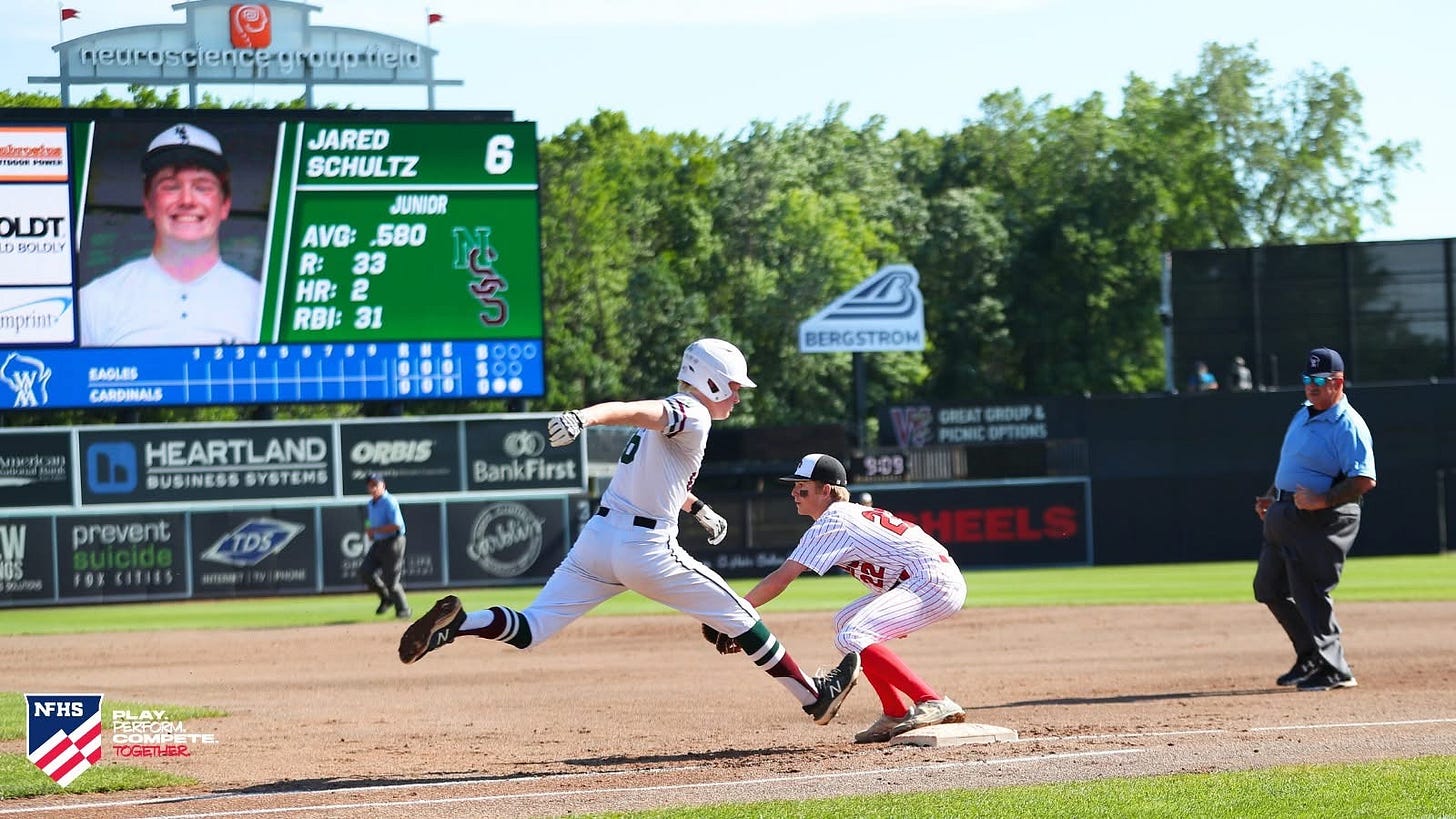NFHS Mandates Double First Base for High School Baseball Starting in 2027 to Improve Player Safety
Beginning with the 2027 high school baseball season, the use of a double first base will be required in all games nationwide. The rule aims to enhance player safety and minimize collisions between runners and fielders.
The change was one of 10 rule revisions proposed by the NFHS Baseball Rules Committee during its annual meeting held June 8–10 in Indianapolis and was formally approved by the NFHS Board of Directors.
“Adding the double first base is symbolic to the evolution of the sport,” said Elliot Hopkins, NFHS director of sports and liaison to the Baseball Rules Committee. “It will immediately address running lane violations and further protect the players from the violent collisions that have occurred at first base. By reducing collisions and enhancing safety, it preserves both the integrity of competition and the well-being of those who play.”
New language in Rule 1-2-9 specifies the base's construction:
The white portion of the base will be located in fair territory, while the colored half (a contrasting solid color) will be in foul territory, split by the first base foul line.
There must be no space between the two halves.
Updated instructions across several rules—including Rule 8-2-2a—govern how batter-runners and fielders interact with the double base:
On initial plays at first, the batter-runner must use the colored portion, unless a fielder moves into foul territory to field a dropped third strike—then the runner may use the white half.
After reaching first, the runner must always return to and occupy the white base for pick-offs, leads, or tagging up.
For walks or extra-base hits where no play is made at first, the runner may use either side.
Interference and obstruction rules have also been added.
A batter-runner will be called for interference if they only touch the white side during a force play and collide with a fielder.
Conversely, a fielder who only uses the colored side and collides with a batter-runner will be charged with obstruction.
Additionally, Rule 2-5-1h states that a batted ball is fair if it hits or bounds over any part of the white base, and foul if it hits or bounds over the colored base (per Rule 2-16-1h).
Other Rules: New Limits on Defensive Meetings
To address game length and pace-of-play concerns, Rule 3-4-6 introduces a limit on defensive player meetings:
Each team is allowed one player-to-player meeting per inning while on defense.
Any further meetings will be denied by umpires for that half-inning.
Rule 2-10-3 defines a player-to-player meeting as involving two or more defensive players.
Hopkins clarified the intent behind this change:
“A player-to-player defensive meeting is a natural and essential part of the game—whether it’s strategy, encouragement or clarification,” he said. “But having multiple meetings in a half-inning adds time that lengthens a contest and is not in the best interest of the game.”
In contrast, a charged conference involves a coach and is intended for direct instruction.
Uniform and Equipment Clarifications
Two other updates were made to align baseball rules with broader NFHS regulations:
Rule 1-4-4 now allows a school’s name, logo, mascot, or player’s name to appear on uniform tops and/or pants, effective 2027.
Rule 1-6-3 prohibits players from wearing audio (microphones) or video (camera) equipment during games.
.
For a full list of the 2027 NFHS baseball rules changes, visit www.nfhs.org and click on "Sports" > "Baseball".



